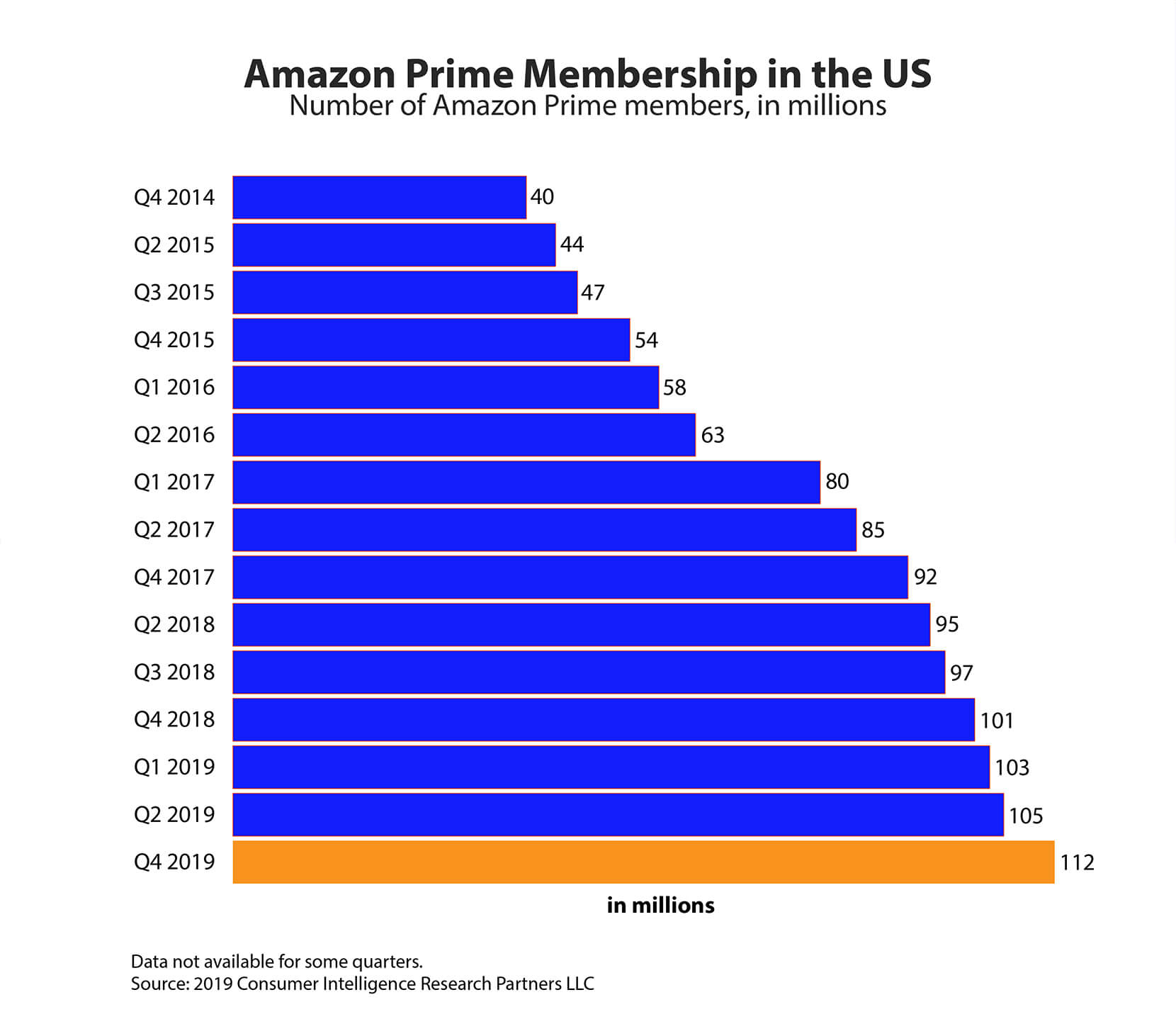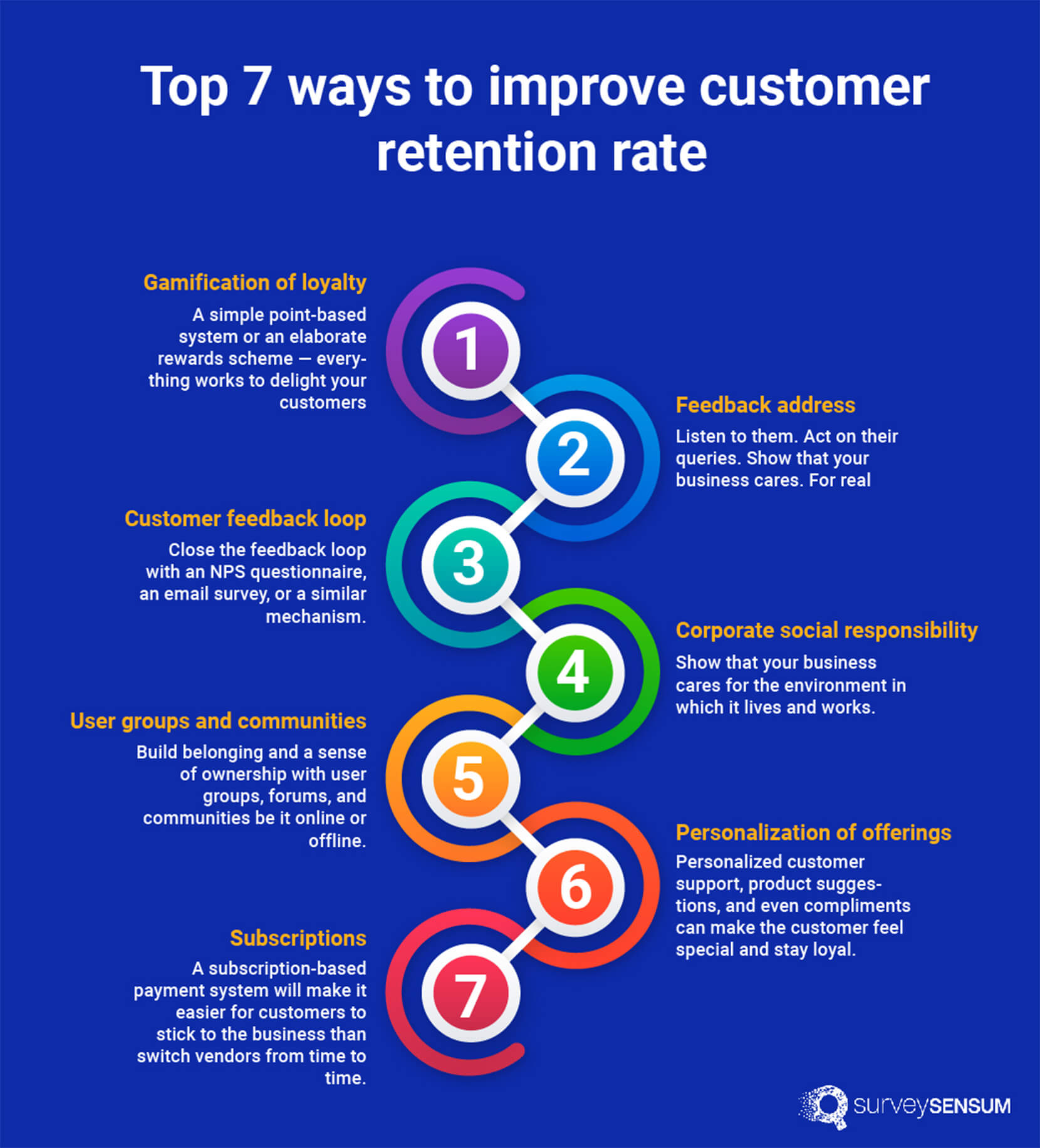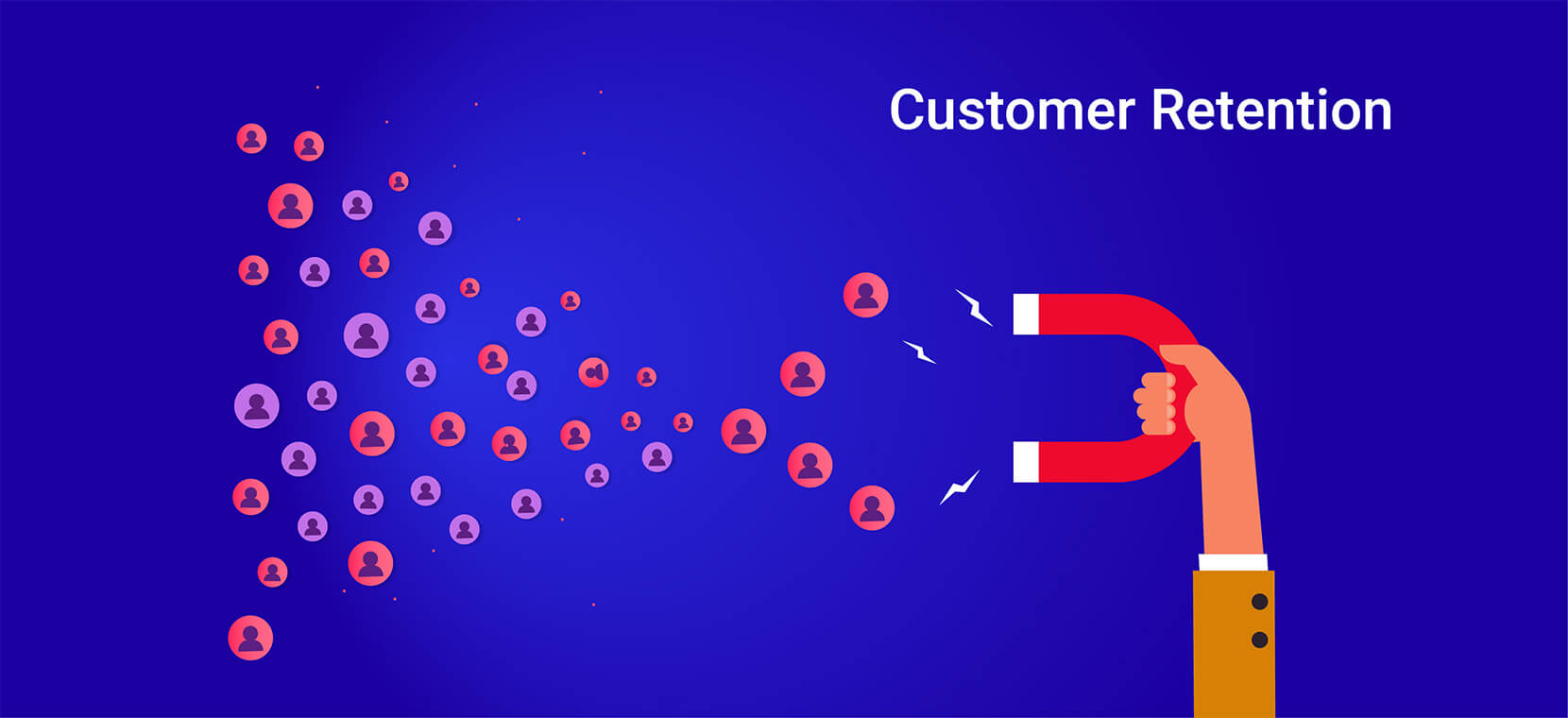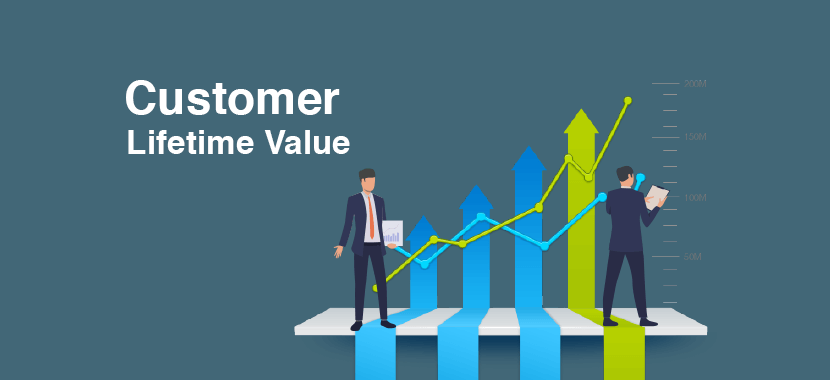
Do you know why Amazon is the global leader in eCommerce? It gets one thing right that one thing is enough for everything to fall in place that one thing is customer retention.
According to research, 98% of customers continue the Amazon Prime membership for two years or more. by the end of 2019, Amazon was estimated to have 112 Million Prime customers.

What makes this number magical is that each Prime customer spends an average of $1,400 compared to the $600 by non-Prime members. Now, this proves the age-old statistic that loyal customers spend way more than (almost double) of new customers.
That brings us to the question — What is customer retention? How does it help businesses achieve success and long-term growth at scale?
What is customer retention?
Here is a short story that proves why customer retention is the secret ingredient to long-term business growth.
Robert Bellamy had used a Ford Model-T for more than 30 years. When it was time to move on to a better car that lives up with the times,
Robert started looking at the latest Ford models. In fact, he did not even consider any other car manufacturer.
All the persuading marketing that other car manufacturers have been trying to woo new customers had little effect on a loyal customer like Robert.
In other words, Ford’s quality, customer service, and several other intangible factors managed to retain Robert as a loyal customer.
That is customer retention and it is no mean feat in today’s world where customer loyalty has no solid ground.
Definition of customer retention
Customer retention definition can be broadly defined as the ability of a business to retain its existing customers over a certain period of time.
A higher customer retention rate indicates that the business has a sustainable relationship with its customers, that these customers will continue doing business and that they might even refer to their near and dear to the business.
That brings us to the concept of customer retention rate. Customer retention rate is the key metric used to measure the number of customers who remain with the business at the end of a given period without taking into account new customers acquired during the period.
To help determine that value, the customer retention rate formula is used:

So, should every business strive to achieve 100% customer retention rate? Although yes,
In reality, it is highly improbable. What is practically possible is 85% to 90% of customer retention. Again, this is a subjective value.
It will fluctuate from the industry and the business model. For example, the retail sector may not be able to achieve a CRR that is as high as business consulting.
The volume of customers and the value of transactions involved being the key differentiators.
CRR as a standalone metric might be misleading to measure the overall health of a business. To get an exact blueprint of business health, CRR along with DRR has to be measured.
DRR (Dollar Retention Rate)
DRR stands for Dollar Retention Rate. It goes one level deeper than CRR to measure the ability of a business to earn revenue from its customers rather than the number of customers retained.
There are some scenarios when DRR can come in handy.
Scenario 1: Some customers start paying more while some others churn
In such a scenario, your revenue might remain constant or might even increase.
Scenario 2: CRR increases but existing customers degrade their plans
In such a situation, you will witness your CRR increase since the number of customers has not decreased.
However, the revenue they provide, or rather the dollars they pay will decrease as a result of downgrades. In both the scenarios, measuring CRR or DRR alone might be misleading.
They should be used hand-in-hand to arrive at the ability of a business to retain its existing customers while consistently increasing the revenue.
Why customer retention is critical for any business?
You must have heard this quote numerous times. An existing customer is a worth five times a new customer.
Well, there is a logic behind this as well. Studies suggest that the probability of selling to an existing customer is 60 to 70% higher than selling to a new customer.
Furthermore, there are several other benefits that a positive or higher customer retention rate can bring to a business.
Recurring revenue
Retained customers are repeat shoppers. As is proven by the Amazon example we cited at the beginning of this blog, retained customers spend more, buy more, and also act as a source of recurring revenue for the business.
Improved brand perception
Remember Mr. Robert who would not think of any other automotive brand other than Ford? Well, it is folks like him that give a brand an exclusivity. Similarly, there are other brands that have been built solely on the shoulders of customer fandom. Think Apple.
Marvel. McDonald’s. Retained customers create this halo of an exclusive brand around a brand making it more persuasive for new customers.
Word-of-mouth marketing
Existing customers who enjoy higher customer satisfaction are walking mouthpieces for the business. In the analog era, if a customer liked a brand they would say it to six other people.
In the internet era, if a customer likes a brand they can leverage social media to say it to a thousand other people (or more).
Customer retention rate ensures that you retain customers who get attached to the brand that they are willing to recommend to others through word-of-mouth marketing.
Higher NPS score
NPS® (Net Promoter Score) is a metric used to measure customer and employee loyalty that a business enjoys.
A positive NPS indicates that the business enjoys better customer loyalty. Customer loyalty and customer retention are two sides of the same coin. Customer loyalty exists only if existing customers are retained.
To sum it up, customer retention helps boost customer loyalty and ultimately your NPS score as well.
Lowers customer acquisition costs (CAC)
Marketing. Sales enablement. Onboarding. There are several customer acquisition costs that a business has to incur to acquire a new customer.
Even with spending all these expenses, there is no guarantee that the customer would be acquired and remain loyal to the business.
But, customer retention which focuses on retaining existing customers can help the business curb its CAC. The need to acquire new customers arises only when CRR dips along with the DRR.
Now that we have seen why customer retention is important, it is necessary to see the best ways possible to improve customer retention.
Although there are countless ways, these top 10 ways can provide assured results.
Top 7 ways to improve customer retention rate

The final question: To retain or not?
To retain or not is an unnecessary question. You obviously need to retain your customers as much as possible.
While it is not possible to 100% of your customers, it is definitely possible to retain a major chunk of them.
Customer retention is proven to accrue benefits on several fronts.
To begin with, it ensures that you have a recurring source of income even if your business is unable to accrue new customers.
Also, it boosts brand image, reduces customer acquisition costs, and makes your business ready for the long-term.
What if your business is already struggling to improve customer retention? All hope is not lost.
There are several strategic ways that can give results, both in the short-term as well as in the long-term.
These strategies aim at cementing the customer relationship one transaction at a time. They infuse a habit into the customer’s way of interacting with a business that will give them an advantage over competitors.
In a nutshell, if you master customer retention, you are cementing the long-term growth of your business. It is the secret ingredient that your business needs to thrive and prosper.











